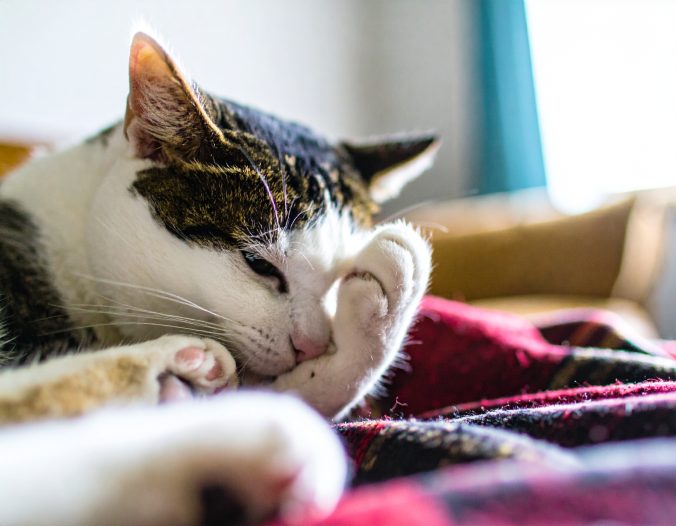Cats are mysterious little creatures — one moment they’re snoozing peacefully, the next they’re tearing through the house like their tail’s on fire. If you’ve ever wondered why your cat kneads, chirps, or has sudden bursts of energy, you’re not alone.
Let’s break down some of the most common (and curious) cat behaviours, what they mean, and when they might signal something more.
Why Do Cats Knead?
Also called “making biscuits,” kneading is when cats rhythmically push their paws into a soft surface — often your lap.
Why they do it:
- Comfort & security: Kittens knead to stimulate milk production, and adult cats may continue this soothing behaviour.
- Marking territory: Cats have scent glands in their paws, so kneading helps them leave their scent on their favourite humans and places.
- Relaxation: Many cats knead before settling down for a nap.
Why Do Cats Chirp or Chatter?
That strange chirping or chattering sound often happens when cats watch birds, squirrels, or other “prey” through a window.
Why they do it:
- Predatory instinct: It’s thought to mimic the bite reflex cats use when killing prey.
- Frustration or excitement: Some experts believe it’s a way of releasing pent-up energy when they can’t reach what they’re watching.
Why Do Cats Zoom Around?
The infamous “zoomies” — those sudden, frantic bursts of running around — usually happen in the evening or after using the litter tray.
Why they do it:
- Energy release: Cats are natural sprinters, and zoomies are a way of burning off excess energy.
- Post-litter box relief: Some cats dash off after using the tray, possibly due to feeling light, refreshed, or simply playful.
- Hunting simulation: Indoor cats especially may use zoomies to mimic the short, high-energy bursts of a hunt.
Other Curious Behaviours
- Head Butting: A friendly way to mark you with their scent.
- Slow Blinking: The “cat kiss” — a sign of trust and affection.
- Sleeping in Odd Places: Cats choose high or hidden spots to feel safe and observe their surroundings.
When to Be Concerned
Most quirky behaviours are normal, but if they become excessive (e.g., constant zooming, excessive vocalising, or changes in litter tray habits), it’s worth talking to your vet. Behaviour changes can signal stress, pain, or underlying health issues.
Enjoy the Quirks
Cats may be mysterious, but that’s part of their charm. Understanding their behaviours not only satisfies our curiosity but also helps strengthen the bond between you and your feline friend.
Want more cat tips? Check out our guides on keeping indoor cats happy, DIY cat enrichment, and building a stronger bond with your cat.


Leave a Reply